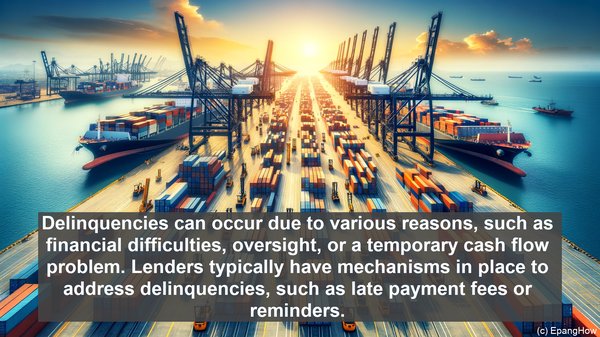Introduction: The Importance of Financial Terminology
Hello, and welcome to our video on financial default and delinquency. When it comes to managing finances, it’s essential to grasp the nuances of various terms. Today, we’ll be focusing on default and delinquency, two terms that often cause confusion. While they both indicate a failure to meet financial obligations, they differ in their severity and implications. So, let’s get started!

Defining Financial Default: Crossing the Point of No Return
Financial default refers to a situation where a borrower fails to repay a loan or meet a contractual obligation within the agreed-upon timeframe. It’s often considered the ‘point of no return’ in the lending process. When a borrower defaults, it indicates a significant breach of trust and raises concerns about their ability or willingness to repay. Defaults can occur in various financial contexts, such as mortgages, credit cards, or business loans. The consequences of default can be severe, including legal action, asset seizure, and long-term damage to the borrower’s creditworthiness.

Understanding Financial Delinquency: A Temporary Lapse
Financial delinquency, on the other hand, refers to a situation where a borrower misses a payment or fails to meet an obligation within the agreed-upon timeframe. While delinquency is a serious matter, it’s often seen as a temporary lapse or a short-term issue. Delinquencies can occur due to various reasons, such as financial difficulties, oversight, or a temporary cash flow problem. Lenders typically have mechanisms in place to address delinquencies, such as late payment fees or reminders. However, if delinquencies persist or become frequent, they can escalate to default, triggering more severe consequences.
The Impact on Credit Scores: Default vs Delinquency
One of the critical differences between default and delinquency lies in their impact on credit scores. A credit score is a numerical representation of an individual’s creditworthiness, and it plays a crucial role in determining their ability to secure future loans or credit. When a borrower defaults, it has a significantly negative impact on their credit score. This impact can last for years, making it challenging for the borrower to access credit in the future. In the case of delinquency, while it does affect the credit score, the impact may be relatively less severe, especially if the issue is resolved promptly. However, repeated or prolonged delinquencies can gradually erode the borrower’s creditworthiness.
Legal Ramifications: Default as a Last Resort
From a legal standpoint, default is often seen as a last resort. When a borrower defaults, it indicates a significant failure to meet their obligations, and it can lead to legal action by the lender. The legal process can vary depending on the jurisdiction and the nature of the loan. In some cases, it may involve foreclosure, repossession, or even bankruptcy proceedings. Delinquency, while not typically leading to immediate legal action, can still result in penalties, fees, or the initiation of collection efforts by the lender.
Prevention and Mitigation: Strategies for Borrowers and Lenders
Whether you’re a borrower or a lender, there are strategies to prevent or mitigate default and delinquency. For borrowers, it’s crucial to have a clear understanding of the terms and conditions of any financial agreement. Maintaining open communication with the lender, especially in case of financial difficulties, can often lead to more favorable outcomes. Lenders, on the other hand, can implement robust risk assessment measures, including thorough credit checks and ongoing monitoring. In cases of delinquency, proactive communication and the availability of flexible repayment options can often help in resolving the issue before it escalates.
